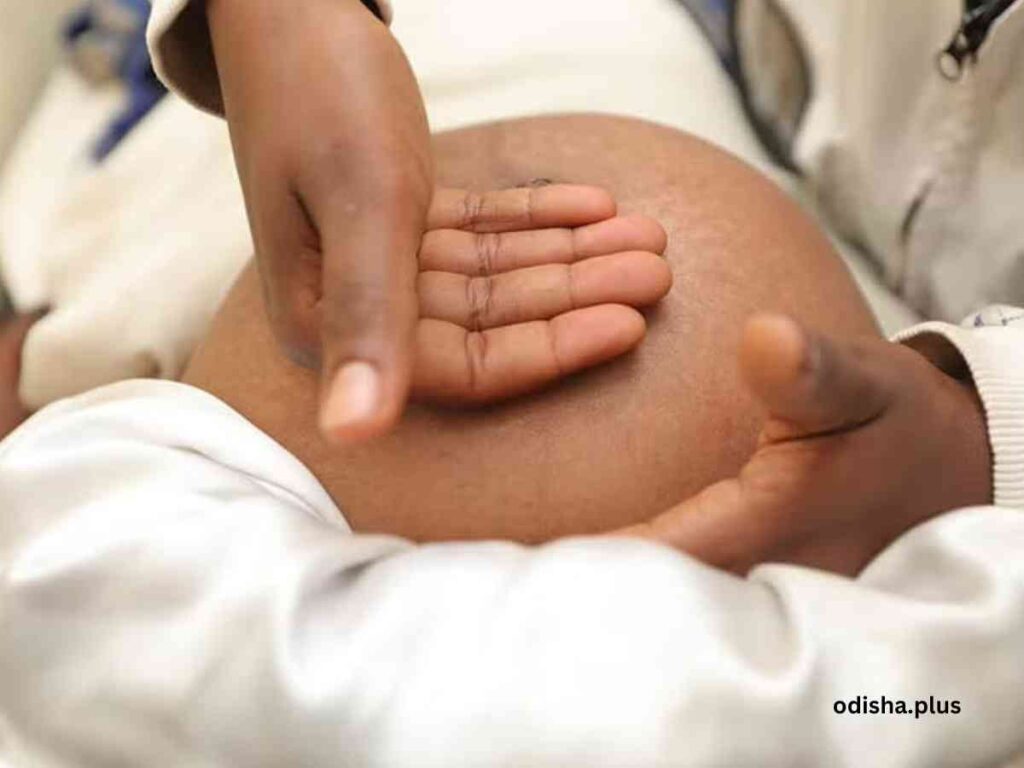An UNFPA analysis underscores the need for urgent action to address the climate crisis and its disproportionate impact on women and girls
Nilambar Rath

A recent analysis by the United Nations Population Fund (UNFPA) reveals that women and girls are disproportionately affected by the climate crisis. The study found that nearly 40% of displacements driven by natural disasters in 2023 occurred in countries highly vulnerable to climate change but ill-equipped to respond.
Climate change is exacerbating extreme weather events, leading to increased risks of stillbirth, malnutrition, gender-based violence, and exposure to heat stress and infectious diseases. Women and girls are more likely to experience these risks due to existing social and economic inequalities.
The analysis highlights those 13.1 million of the 26.4 million displacement incidents involved women and girls. More than half of these displacements took place in China, Türkiye, the Philippines, Somalia, and Bangladesh.
Global Issue, Local Consequences
Disaster-linked displacements are no longer limited to low- or middle-income countries. As per the analysis on the disaster-related internal displacements (UNFPA, November 2024) The devastating impacts of climate change are being felt across the globe, with disaster-related internal displacements affecting countries of all income levels and human development indices. This recent analysis reveals that over half of disaster displacements in 2023 occurred in countries with high or very high human development index (HDI) scores, while 45% took place in high or upper-middle-income countries.
In fact, this global issue results insevere local consequences.The analysis underscores that, countries with some of the highest GDPs in the world, such as China, India, the United States, Mexico, and Canada, are among those experiencing the largest numbers of disaster-related displacements. This highlights the fact that disaster-related internal displacement is a truly universal phenomenon, with major impacts seen in even high- and middle-income countries.
While not all weather-related disasters and their associated displacements are directly linked to climate change, many are. Floods and storms, which are increasing in frequency and intensity due to climate change, account for 73% of all disaster displacements. The prevalence of disaster displacements in high-income countries with robust media markets may distract international attention away from those in low-income, low-HDI, low-GDP countries.
The analysis also reveals significant gaps in gendered vulnerabilities of disaster-displaced populations. Women and girls in disaster-affected countries with weaker response mechanisms are often overlooked, and their needs may be further neglected. In fact, 37% of all disaster-related displacements occurred in countries ranked in the top quarter of the Gender Inequality Index (GII), while 34% occurred in countries ranked in the bottom quarter of the GII.
The sexual and reproductive health needs of women and girls are similarly under-resourced in disaster-affected countries. Among the 25 countries with the most disaster-related internal displacements, six have some of the highest maternal mortality rates in the world. This includes countries such as South Sudan, Nigeria, Somalia, Afghanistan, Kenya, and Malawi.
As a country highly vulnerable to climate change, India is not immune to the devastating impacts of extreme weather events. Rising temperatures, changing precipitation patterns, and increased frequency of natural disasters are threatening the lives and livelihoods of millions of Indians.
As Dr. Natalia Kanem, Executive Director of UNFPA, emphasizes, “The climate crisis is making the world more dangerous for everyone, and in countries hardest hit, it is women and girls who suffer most.”
Environmental Crises Leading to Child Marriages
The far-reaching consequences of environmental crises extend beyond the immediate destruction of infrastructure and livelihoods. A disturbing trend has emerged, where environmental disasters can lead to an escalation in child marriages. According to the United Nations Population Fund (UNFPA), the threat of sexual violence in post-disaster settings can drive families to marry off their daughters at a young age, in a misguided attempt to protect them and preserve family honor.
Further, the disruption of education due to climate-related disasters has a direct and devastating impact on girls’ lives. Over 4 million girls in low- and lower-middle-income countries are expected to be prevented from completing their education due to climate-related events. This not only denies them the opportunity to acquire knowledge and skills but also increases their vulnerability to child marriage.
Thus, it is essential to recognize the intricate link between environmental crises, education, and child marriage. By addressing these interconnected issues, we can work towards breaking the cycle of vulnerability that disproportionately affects girls and young women. This requires a comprehensive approach that prioritizes girls’ education, protects them from violence and exploitation, and supports their empowerment and agency in the face of environmental crises.
Lack of Access to Healthcare Services
As we elaborate, climate-related disasters can lead to a lack of access to healthcare services, including maternal and reproductive healthcare. This increases the risk of maternal and neonatal mortality.Similarly, climate-related stress and displacement can increase the risk of gender-based violence, including sexual violence and exploitation whereas the climate change can also lead to the loss of livelihoods, particularly for women who rely on natural resources for their income.
To address the critical intersection of climate change and sexual and reproductive health and rights(SRHR), governments must prioritize the following:
- Conduct SRHR-Sensitive Climate Risk Assessments: Assess the potential impacts of climate change on SRHR, including the disruption of healthcare services and the increased risk of gender-based violence.
- Develop SRHR-Inclusive Climate Adaptation Plans: Ensure that climate adaptation plans address the specific needs of women and girls, including access to reproductive healthcare and protection from gender-based violence.
- Increase Funding for SRHR and Climate Change Initiatives: Allocate sufficient funding to support SRHR and climate change initiatives, including programs that promote women’s empowerment and reproductive health.
- Promote Women’s Leadership in Climate Decision-Making: Ensure that women are represented in climate decision-making processes, including in the development of national climate policies.
Time to Act Now!
The UNFPA analysis underscores the need for urgent action to address the climate crisis and its disproportionate impact on women and girls. This includes investing in climate resilience, increasing climate finance, and empowering women and youth to lead climate action.
The time to act is now. We must work together to find long-lasting solutions that will help people and communities adapt to climate change and ensure that livelihoods are protected. This includes supporting governments in designing climate change solutions, empowering young people to develop innovative solutions, and ensuring that national climate policies incorporate sexual and reproductive health and rights (SRHR) issues.
The far-reaching consequences of disaster displacements demand urgent attention and action. It is essential to address the specific needs of women and girls, including access to reproductive healthcare and protection from gender-based violence. The international community must work together to support countries in building resilience to climate change and ensuring that the rights, safety, and health of women and girls are protected.
(The author is a senior journalist, communication specialist and BCC expert. Views expressed are personal.)
#ClimateChange #ClimateCrisis #GenderIssues #InternalDisplacement #ReproductiveHealth #SexualAndReproductiveHealth #GenderVulnerabily #UNFPA #GenderInequality #ClimateAction #ClimateResilience #HumanDevelopmentIndex #ChildMarriage #MaternalHealth #NeonatalHealth






















There is One Living world .
No better place than Earth .
Let’s take stepps to save Nature for Today n Tomorrow .
Save Natural resources like Trees , Plants .
Growth in line with Restoration
Reduce Pollution with Restoration of Cleantech Devices n Enhansed value education on Environment .